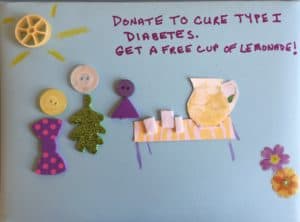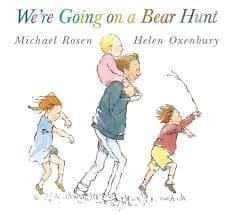My family is celebrating the birth of our newest member. I love her name: Olivia Bliss.
Newborns are the ultimate embodiment of our hopes for the future. They arrive in this world with no track record. Which means their stories are not yet written. For us, their caretakers, it is out best chance at a do-over. As my mother always says, “Each generation gets better.” As the Crosby, Stills, Nash and Young song says, “Teach your children well.” The question is: When can you start? What can your baby understand?
You probably can already count off some things you hope your child will do better than you did. Here are some things I remember from my list: My kids would become fluent in a second language and understand the difference between a chromosome and a gene. They would not ditch their longtime, not-so-cool best friend for the super-cool new kid on the block. They would strike a nice balance between studying and socializing (hee hee).
But all that was dreaming about the future. (What I learned along the way as my kids grew up is the subject of another conversation.) This if for those whose baby has just entered the world. So, the question for today is: When can we start teaching our babies? Does your infant understand a word you are saying?
As Sarah Palin would say, “You betcha!” This is not just my own writerly, readerly enthusiasm bubbling over. Science backs me up.
Biggest brain growth is during preschool years
The value of talking to children, reading to children — even those who cannot yet talk back to you — is huge. A child’s brain has its biggest potential to grow during the first years of life. After that it slows down. Forever. Think of the newborn brain as a ball of unconnected cells sitting next to one another inside the baby’s head. Most of the brain cells your child will ever have – at the age of ten, twenty, fifty, a hundred – are right there at birth. But to develop intelligence, the baby needs to make CONNECTIONS between the cells. He or she has the capacity to do this with amazing speed – up to 700 new connections per second in the first year of life.
There is a catch — to power up the brain, the baby needs interaction with the world – lots and lots of it.
Talk, Read, Repeat
All sorts of new things get those connections crackling. I remember the wordless “conversations” I had with my baby. I smiled, she broke into a toothless grin. I cooed, and it triggered a gurgle or screech in response. You can see from Day One that your baby is soaking up your face, your voice, your touch.
Baby is primed for so much more. Words are key. You don’t want to waste a moment. The more you speak to your baby – even if he or she can’t yet speak back – the more brain connections your baby is making. Researchers have found that three-year-olds who have been exposed from birth to lots and lots of words have vocabularies that are twice as big as those who don’t hear many words at all. And, the same part of the brain that lights up when your baby learns words, lights up later when your child is learning how to read. Which, in turn, gives your child the tools to make well-reasoned decisions. Just this spring, as reported on by Drs. Oz and Roisin, a research study used brain scans to confirm that “Reading is Brain Food For Kids.”
Books You and Your Baby Will Love
The icing on the cake? There is something in it for YOU! There are children’s books out there that will cause your spine to tingle. Take a look at your bookstore or local library.
One of my very first loves was The Little Fur Family which begins: “There was a little fur family warm as toast smaller than most in little fur coats and they lived in a warm wooden tree.” How beautiful is that? I became addicted to the delicious feeling of these simple, well-chosen words rolling off my tongue. And my baby daughter was mesmerized (well, she sure looked entranced).
Most of the books I read in the baby years were beautiful and spare, almost like poetry – just a few hundred words. Classics like Goodnight Moon, The Snowy Day, and The Very Hungry Caterpillar. But, there were a few exceptions – books with page after page of sprawling multi-syllabic words. Max Makes a Million is a poster child for this kind of book – more than a thousand whimsical words that tell the tale of a dog named Max who lived in New York, “a jumping, jazzy city, a shimmering, stimmering triple-decker sandwich kind of city,” and who dreamed of living in Paris and writing poetry. The book is categorized as age appropriate for ages 5 and up. But my two-year-old was hooked. Before she was three, she had worn Max to shreds and could “read” it to me (i.e. she memorized it), from cover to cover. Did she understand every concept, every wildly imaginative riff? No. Of course not. But she understood the mood and she fell in love with the language. A friend of mine has told me her toddler grandson had a similar experience reading Me and Uncle Romie every day for months.
So that’s it. You have a golden opportunity – right from the beginning – to get your baby off on the right path. Talk to your baby – tell her what you’re buying at the grocery store or seeing outside the window; talk to him about what his toys look like – colors, shapes, textures. And read to your baby. Read board books. Read cloth books. Read simply worded picture books. Read books with more complicated language like Max Makes a Million or Me and Uncle Romie. Curled up together in the warmth of a book, you are giving your child the brainpower for a successful future. And to make a better world.
And, in case you’re too tired to focus much on the future just now: right here, right now, reading these zesty, imaginative books — that just might be the best part of your day!




